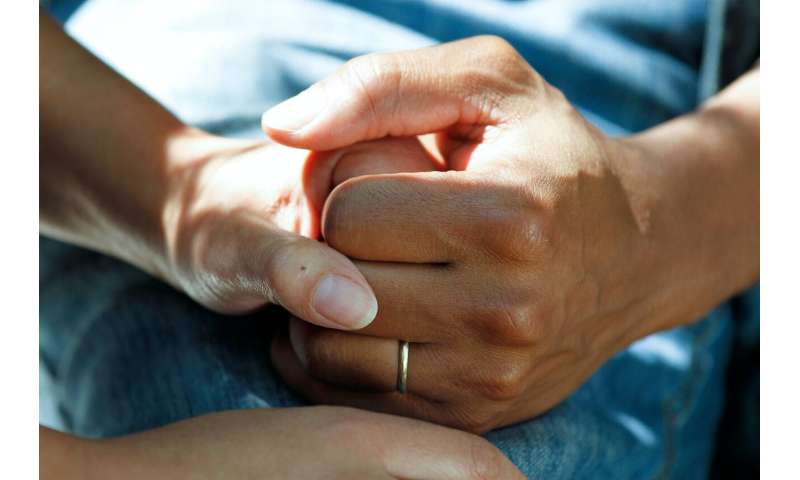How people would choose who gets scarce COVID-19 treatment


As COVID-19 cases begin climbing again in the United States, the possibility arises of a grim moral dilemma: Which patients should be prioritized if medical resources are scarce?
Researchers from the United States and China asked more than 5,000 people from 11 countries how they would make one version of that ethical decision. Study participants considered 15 possible scenarios, choosing which of two COVID-19 patients should get access to a ventilator that could save their life.
The two patients they had to choose between differed on 10 characteristics, including age, gender, probability of survival and criminal history.
Results showed that people worldwide gave two characteristics the most weight when they made their decision: age and probability of survival.
Those two characteristics explained about 50 percent of their decisions, results showed. The other eight characteristics combined explained the other 50 percent.
“People seemed to want to maximize total benefits to society by choosing those who would live longest as a result of the treatment, either because of their younger age or because of overall probability of survival,” said Yunhui Huang, co-author of the study and assistant professor of marketing at The Ohio State University’s Fisher College of Business.
“It’s a very utilitarian way of deciding.”
But there were some differences in how people decided that depended on the culture of their country, the number of cases where they lived, and whether they felt personally threatened by the disease, the study showed.
Huang conducted the study with Liyin Jin and Yongheng Liang of Fudan University in Shanghai and Qiang Zhang of the Chinese University of Hong Kong in Shenzhen. The study was published online recently in the Journal of the Association for Consumer Research.
The 5,175 participants came from 11 countries that at the time of the data collection (April 8-18, 2020) covered about 49 percent of the world’s population and 69 percent of confirmed COVID-19 cases. China, the United States, Brazil, the United Kingdom, Australia and South Korea were among them.
All people participated online. In the 15 scenarios, the participants were presented with two COVID-19 patients who both needed a ventilator to survive when only one was available. They were asked which patient should be given the ventilator. They then completed a survey that collected demographic information and asked how much they felt COVID-19 affected their own life.
Both patients in the scenarios were described based on 10 characteristics: age, gender, probability of survival, socioeconomic status, criminal record, the number of people who the patient has infected, family members who have also been infected, the expected number of days that this patient needs to be on the ventilators, the costs paid by public finance and nationality.
“Other than age and probability of survival, the other eight were given considerably lower weight in our sample, and their weights did not differ significantly from one another,” said Huang.
Still, the findings showed that people generally preferred prioritizing people who shared their own nationality, those who had never committed a crime, and those who were likely to incur lower costs, would need fewer days on the ventilator and had infected fewer people.
The researchers found differences in the responses of people from collectivist cultures, which emphasize the needs and goals of the group, versus individualistic cultures.
In collectivist cultures like China, which emphasize respect for the elderly, there was a weaker preference for saving young versus old patients. They also prioritized people with the same nationality and those without a criminal record.
Individualistic cultures, like the United States, attached greater importance on the patient’s probability of survival when deciding who got the ventilator.
There were also differences in responses depending on the attitude of the culture toward power inequalities in society. Study participants from countries like Korea, where inequality among people is more accepted, put more emphasis on criminal records in their decisions.
“Research has shown that cultures that accept a higher degree of inequality also prefer a more structured world, so it makes sense that they would not prioritize patients who disrupt that stability,” Huang said.
Cultures that find inequality among people less acceptable attached even greater importance to survival probability, possibly because that attribute is not related to social class and status, she said.
Elements of the COVID-19 pandemic itself affected people’s moral choices, the study found. People in areas with more COVID-19 cases were even more likely to favor the young. That is consistent with previous findings that have found that perceived loss of control, which is likely common among people during a pandemic, is linked to more utility-based moral preferences.
But people who said they felt more personally impacted by COVID-19 made a different calculation in their decisions: They put less emphasis on survival probability when deciding who should get the ventilator.
“One possible explanation is that people who feel personally threatened by COVID-19 may put more importance on their own personal characteristics when thinking about who should get a ventilator at the expense of survival probability,” Huang said.
These findings about how the pandemic itself affected people’s choices have important implications.
“During the course of the pandemic, people’s moral choices might change as they feel more or less threatened by what is going on around them,” Huang said.
The research is not intended to guide decision-making by doctors or policymakers, Huang said. But it is important to know how the public feels about these ethical issues.
For example, the findings showed that factors like criminal records and nationality, which presumably should not influence treatment decisions, sometimes affected people’s choices.
Source: Read Full Article